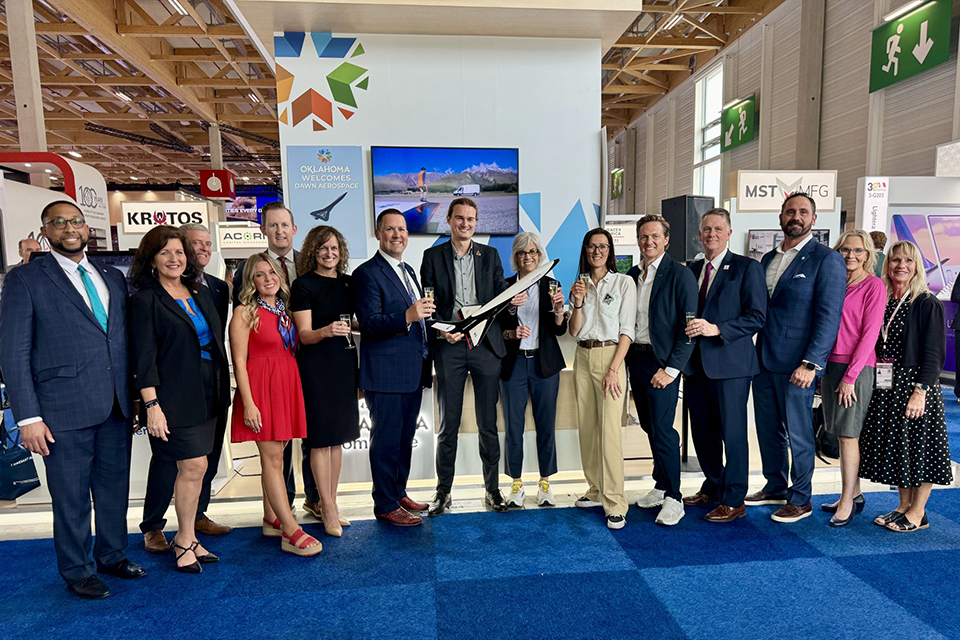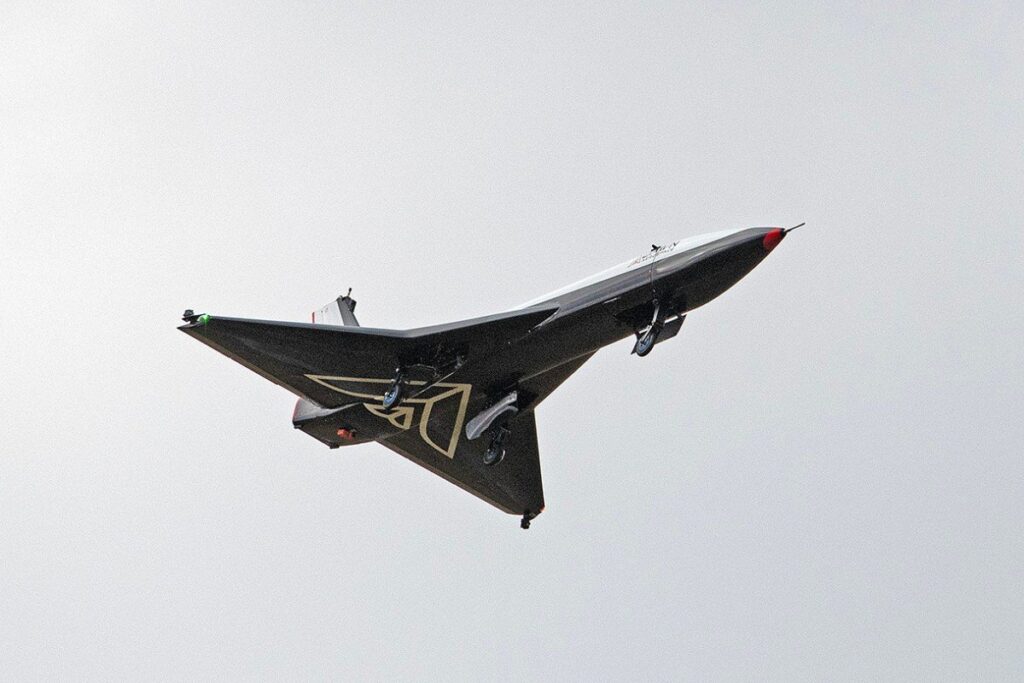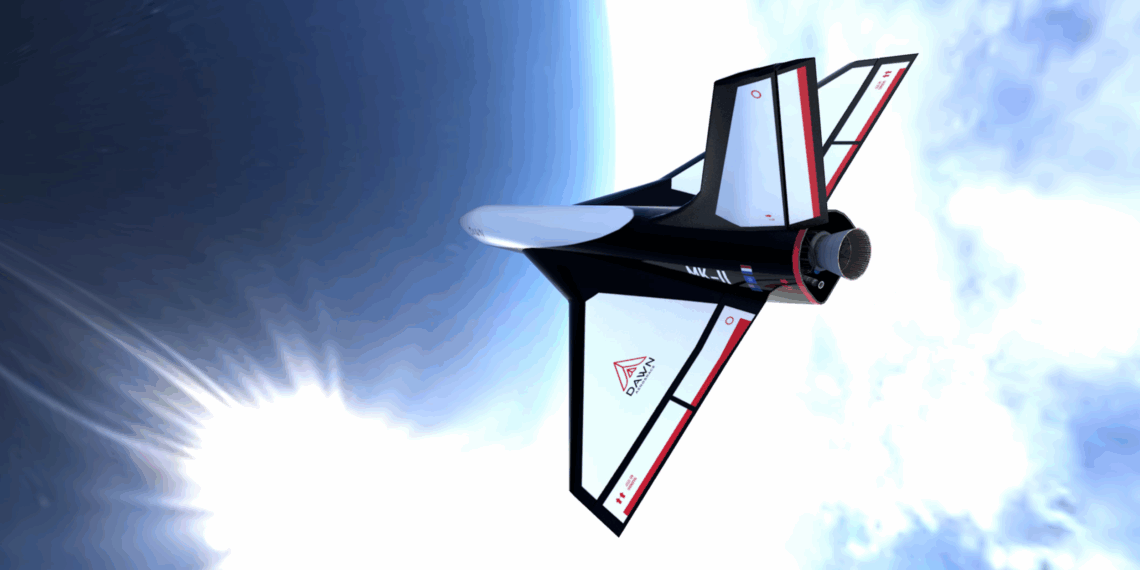BURNS FLAT, Okla. (OBV) – Oklahoma will be the launch site of a revolutionary spaceplane that will blast off in pursuit of groundbreaking microgravity research and suborbital spaceflight.
Oklahoma Space Industry Development Authority (OSIDA) is partnering with Dawn Aerospace to launch the company’s Aurora spaceplane from the Oklahoma Air and Space Port in Burns Flat, Okla.
The $17-million agreement elevates Oklahoma to a premier U.S. launch site for microgravity research and suborbital spaceflight. The Oklahoma Air and Space Port will be the base of Dawn Aerospace’s U.S. operations for the Aurora.
“Oklahoma is positioned to be at the forefront of the next space frontier and a hub for national defense,” said Oklahoma Lt. Gov. Matt Pinnell. “With targeted investment, the state is moving to secure frequent and reliable space access and is set to become America’s busiest suborbital launch site.”

The new launch site is expected to bring new jobs, infrastructure investment and opportunities for first-year free flight access for Oklahoma universities.
“Launching from Burns Flat will unlock a new class of microgravity research, national security applications, and commercial innovation,” Pinnell said.
The Mk-II Aurora, or Aurora Mark 2, is a rocket-propelled, remotely piloted aircraft that can climb 100 km altitude, just over 62 miles, touching the edge of space, twice a day. It is touted as “the fastest, highest-flying aircraft ever to take off from a runway.”
The spaceplane has rapid reuse capability which enables frequent, affordable access to microgravity. Oklahoma Aerospace & Aeronautics officials said the Aurora’s special capability benefits researchers, commercial innovators and Oklahoma’s academic institutions.
“This is a pivotal moment for Oklahoma,” said Brenda Rolls, Chairwoman of OSIDA. “Welcoming the Aurora spaceplane to Burns Flat is not just about a new aircraft — it’s about opening the skies above Oklahoma to daily space access. This partnership will generate economic growth, educational opportunities, and scientific advancement for decades to come.”
Microgravity environments enable scientific and technological advancements that are not possible on Earth, according to Aerospace & Aeronautics officials.
Researchers who are unencumbered by the effects of gravity are able to study fundamental physical and biological processes with new clarity, which makes discoveries in areas such as cancer research, tissue regeneration, fluid dynamics and advanced materials possible.

Frequent, low-cost access to microgravity facilitates transformative breakthroughs with real-world impact.
“This partnership is the result of years of effort and vision,” said Rep. Anthony Moore, R-Clinton. “We are thrilled to see our state’s investment in space infrastructure paying off. This cements Oklahoma’s place as a leader in the future of aerospace and defense.”
The partnership between Dawn Aerospace and the Oklahoma Space Industry Development Authority (OSIDA) encompasses both the vehicle and an operations team, with up to 100 flight days and 200 flights planned in total after initial testing.
The Aurora Mark 2 is a reusable spaceplane capable of carrying small payloads to 100 kilometers, or just over 62 miles. The Aurora takes off and lands horizontally from a runway, unlike traditional rockets.
Oklahoma Air & Space Port is one of 14 FAA-licensed space ports in the United States. It has a nearly three-mile-long runway
Dawn Aerospace will train an Oklahoma-based team in New Zealand before flights take off from Oklahoma Air & Space Port.
The partnership between Dawn and OSIDA will further expand Oklahoma’s aerospace industry and grow its workforce, according to Rep. Nick Archer, R-Elk City.
“The arrival of Dawn Aerospace and its cutting-edge Aurora spaceplane shows that Oklahoma is at the forefront of the future of aerospace,” Archer said. “Bringing the Aurora spaceplane to Burns Flat opens the door to high-tech jobs and a future-driven economy, including new opportunities for microgravity research that will help bolster Oklahoma’s growing biotech and pharmaceutical industries. I’m incredibly excited to see our region become a launchpad for American innovation.”
Dawn Aerospace, which is headquartered in Delft, Netherlands and Christchurch, New Zealand, was founded in 2017 and employs more than 120 people. It has offices in the United States, New Zealand, and Europe. Its customers include Scout Space, Johns Hopkins University, Cal Poly, and Arizona State University. And their systems have flown on 26 operational spacecraft.

















